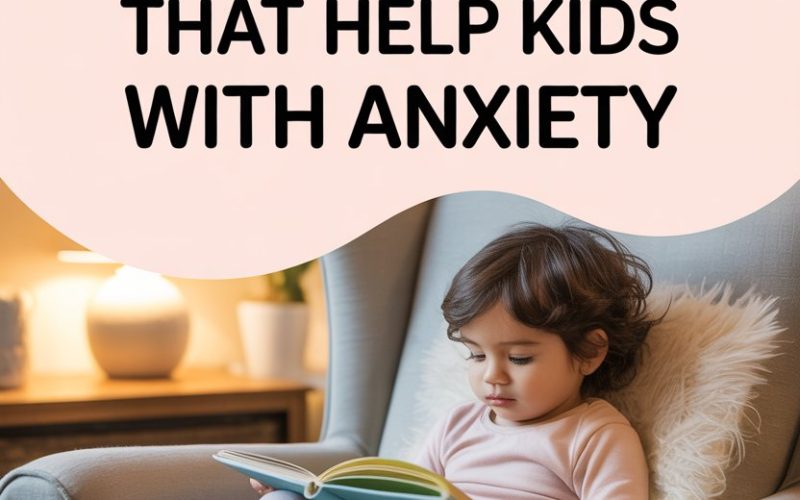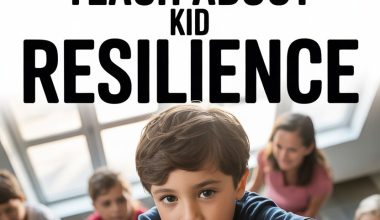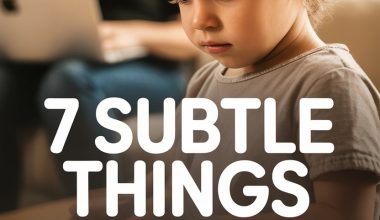Anxiety in kids can be about as subtle as a marching band at 6 a.m.—and just as hard to ignore.
Whether it’s school jitters, worries about friendships, or that mysterious stomachache that magically appears before algebra, anxious feelings can sneak into the most routine moments.
The good news? Ordinary, everyday routines (yes, the ones you already sort of do—sometimes even in your pajamas) can make a world of difference for an anxious child.
Little tweaks, sprinkled throughout the day, can help your child feel safer, calmer, and more in control. None require a PhD in psychology, an extra 40 hours a week, or a side gig as a Zen monk.
Ready for less drama and more peace? Let’s get to it.
Predictability Is the Unsung Hero
A predictable routine acts like a cozy blanket for anxious kids. When the world feels like it’s spinning, knowing what comes next can be grounding.
Set up a general schedule for mornings, after-school, and bedtime. No need for military precision—just a loose structure.
A visual schedule on the fridge (pictures for younger kids, bullet points for older ones) can ease transitions and reduce whining about what’s next.
Try anchoring trickier times of day with “rituals.” For example: Always read a short story after teeth brushing, or play a favourite song while getting shoes on.
These tiny habits signal what’s coming, cutting down on surprises. According to the Child Mind Institute, routines help anxious kids anticipate events and lessen their stress.
Mornings Without Mayhem
Morning chaos is an Olympic sport in many homes. For an anxious child, it’s the perfect storm.
Lay out clothes, shoes, and packed bags the night before. A checklist taped to the bedroom door or bathroom mirror (“Brush teeth? Check. Lunchbox? Check. Sanity? Mostly intact.”) can be a lifesaver.
Build in a little buffer time. Even five minutes to sit together, eat a banana, or just do a silly handshake can make your child feel seen and connected before the day begins.
Research shows that parent-child connection in the morning helps kids self-regulate during the day—anxiety included. If you’re running late, skip the guilt and aim for connection over perfection.
After-School Decompression That Doesn’t Involve Screens
Kids who hold it together at school often melt the second they walk through the door.
A post-school ritual (think: snack and chat, a quick walk, or listening to music together) helps them unwind.
This is not the time to interrogate about algebra tests or missing jumpers. Instead, offer a safe space to relax.
According to the American Psychological Association, “cool-down” routines can help kids process stress and prevent anxious blow-ups later.
If your child likes talking, great. If not, just sitting quietly with you can work wonders.
Sometimes “Would you like to talk, or just hang out?” is the most reassuring question you can ask.
The Power of Predictable Meals
No need for Michelin stars. The act of eating together—whenever possible—offers a reliable anchor in a child’s day.
Even if dinner happens at 5:45 p.m. one night and 8:30 p.m. the next, try to keep one meal together where everyone sits down (phones and tablets get their own timeout).
Use this time for light conversation, sharing the best or silliest part of your day. Predictable mealtime routines have been linked to lower anxiety and better emotional regulation in kids, according to research from Harvard.
If you’re short on time, breakfast counts. Even a quick “together” meal once a day is a win.
Let Movement Work Its Magic
Physical activity is anxiety’s arch-nemesis. You don’t need a home gym or a marathon plan—just a bit of predictable movement each day.
A family walk after dinner, a five-minute dance party before bed, or just running around in the garden can help anxious kids burn off nervous energy.
The CDC notes that active kids sleep better, concentrate more easily, and show fewer signs of stress.
For children with a lot of pent-up energy, “heavy work” activities—like carrying groceries, pushing a laundry basket, or climbing at the playground—can be especially calming for the nervous system.
Bedtime Routines Worth Their Weight in Gold
Anxious minds often rev up at bedtime, treating the pillow as an invitation for worry.
Develop a wind-down routine that signals safety and rest. Dimming the lights, using a lavender-scented lotion, or cueing up a favourite lullaby can help.
Reading together, using guided imagery (imagine floating on a cloud, or visiting a favourite place), or practicing a simple breathing exercise makes sleep less of a battle.
Science backs this up: kids with consistent bedtime routines fall asleep faster and have fewer anxious nights, according to The Sleep Foundation. Yes, even if you’re re-reading the same dog-eared storybook for the 10,000th time.
Rituals for Worries—Not Just Toothbrushing
Anxious kids benefit from “containers” for their worries. Make a “worry box” together—a shoebox or jar where they can write or draw worries, then close the lid.
Tell your child the box handles them until worry time (set aside ten minutes in the evening, max).
Some families use “worry time” to talk through fears with a parent, but the key is to keep it brief and scheduled.
According to therapist Natasha Daniels’ insights, this approach helps kids keep worries from taking over the whole day.
If your child prefers, a visualisation ritual (like tossing imaginary worries out the window) works too.
Small Choices, Big Control
Anxiety loves to make children feel powerless. Sprinkle choices throughout their day—what snack, which socks, which book to read.
These micro-decisions give children a sense of agency without overwhelming them.
For bigger transitions (starting a club, visiting a new place), offer two options: “Would you like to try the new club with me this week, or next?” This builds confidence in handling new situations.
Experts often recommend offering structured choices to anxious kids, as it helps them practice decision-making in a safe way.
Breathing—But Make It Fun
Deep breathing can calm the nervous system, but telling a child to “just breathe” tends to go over about as well as broccoli ice cream.
Make breathing a game: blow up an imaginary balloon, pretend to blow out birthday candles, or use a pinwheel.
Apps like Smiling Mind or Breathr offer short, guided exercises that even busy families can squeeze in.
Practice these at calm times (not just during meltdowns), so they become second nature when anxiety knocks.
Nurturing Connection—Your Secret Weapon
Never underestimate the power of a cuddle, a shared joke, or five minutes of undistracted attention. Anxiety shrinks when kids feel connected.
Find small ways to connect: a silly handshake at the school gate, reading together, or just flopping on the sofa side by side. Even if your child isn’t a big talker, presence is what counts.
Attachment research, such as that highlighted by The Greater Good Science Center, suggests that everyday acts of connection build resilience and emotional security.
When Life Gets Messy
No one’s routine runs like clockwork every day—not even in those impossibly tidy parenting blogs. Sick days, late work calls, lost shoes, and surprise parent-teacher meetings happen.
When routines falter, naming the change (“We’re doing things differently today because…”) can help anxious kids cope. Returning to a familiar ritual afterwards reassures them that the world hasn’t spun off its axis.
If your child has a wobbly day, try reconnecting with a favourite comfort activity that’s part of your regular routine—tea and biscuits, anyone?
Everyday Tools, Extraordinary Impact
You don’t need a cape, a manual, or a magic wand. The most powerful tools for helping anxious kids are tucked into daily life: routines, silly rituals, tiny choices, and a goodnight hug.
There’s real science behind it, but at the end of your madcap day, it’s your loving presence—messy, imperfect, and human—that’s the real game-changer.
Here’s to fewer anxiety monsters under the bed, and more peace (plus the occasional cheeky giggle) in your family’s everyday.





